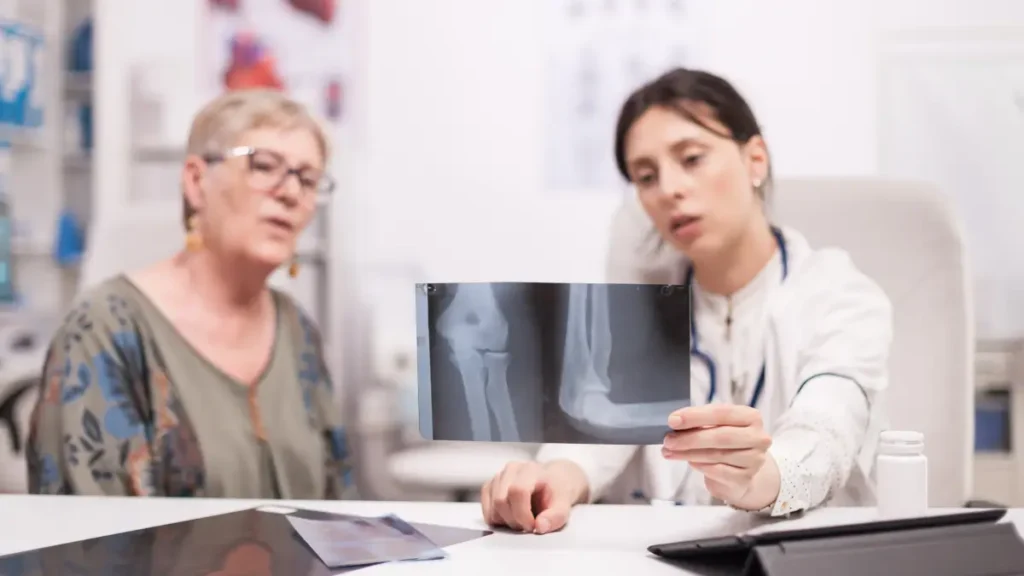Knee pain can be a real party crasher. It affects millions of people, making everyday movements painful and limiting the things you love to do.
Suppose you’ve ever felt that sharp twinge in your knee; you know how frustrating it is to sit out when everyone else is having fun. But protecting your knees and avoiding certain activities is key to preventing further injury and ensuring long-term comfort.

So, which activities should you avoid when dealing with knee pain?
Let’s look in and understand it:
Why Certain Activities Are Risky for Knee Pain Sufferers.
When your knee hurts, your ability to move freely and easily is impacted. Knee pain makes your joints feel stiff, weak, and sometimes swollen. Engaging in certain physical activities, especially high-impact ones, can aggravate this pain. High-impact activities put added stress on your knee joints, which can cause even more damage.
Consulting a knee pain acupuncture treatment specialist is beneficial in managing discomfort and preventing further injury.
High-Impact Sports You Should Avoid
Some sports are particularly tough on the knees because they involve running, jumping, or fast movements. If you suffer from knee pain, you should avoid the following:
Running and Jogging.
Running, especially on hard surfaces like roads and sidewalks, can put immense pressure on your knees. With each step, your knees absorb the shock of your body weight hitting the ground. Over time, this can lead to more wear and tear, worsening your knee pain.
If you love staying active, consider swapping running for a gentler alternative, like walking or swimming. Or prefer smoother surface like garden or soft soil grounds.
Basketball.
Basketball is exciting, but it involves quick direction changes, jumps, and sudden stops. Each time you land from a jump or pivot quickly, your knees take the brunt of the movement. Unfortunately, this can worsen knee pain or even cause new injuries. If you’re a basketball lover, give your knees a break and try something less intense for a while.
Soccer.
Soccer is another sport that’s hard on your knees. It requires a lot of running, twisting, and turning. These motions put stress on your knee joints, especially if you’re playing on uneven ground. For anyone with knee pain, soccer can make the problem worse due to the fast movements and unpredictable playing field.
Activities That Require Prolonged Knee Bending.
Not all activities that cause knee pain are fast-paced. Some involve prolonged bending or repetitive movements, which can also make your knee pain worse.
Cycling.
Cycling might seem like a low-impact exercise, but it can still be harsh on your knees. Prolonged bending, especially if your bike setup isn’t proper, can strain your knees.
If you enjoy cycling, try adjusting your bike to ensure an appropriate posture.
Lower resistance can also help reduce the strain.
Hiking.
Hiking can be a peaceful way to enjoy nature, but it’s not always friendly to sore knees. The uneven terrain, along with steep inclines, can make each step a challenge. If you love hiking, consider choosing flat trails or using knee support to help reduce the impact on your joints.
Impact of Group Fitness Classes.
Group fitness classes can be a great way to stay motivated and active, but not all of them are knee-friendly.
Aerobics/Zumba.
Aerobic classes like Zumba are high-energy and fun, but they involve a lot of jumping and fast-paced movements. While great for cardio, these exercises can take a toll on your knees if you’re already dealing with pain.
CrossFit.
CrossFit is famous for its intense, varied workouts, but it often involves weightlifting and exercises that demand strong knee movements. If you have knee pain, heavy lifting or repetitive squatting can make things worse. Choose gentler workout routines instead.
Home-Based Activities That May Aggravate Knee Pain.
Even at home, some everyday activities can aggravate knee pain without you realizing it.
Heavy Lifting.
When lifting heavy objects at home, bending your knees improperly can put too much pressure on them. Whether you’re picking up a box or carrying groceries, be mindful of how you bend. Try to lift with your legs and not your back or knees.
Gardening.
Gardening can be a relaxing hobby, but kneeling for long periods or squatting can aggravate knee pain. To lessen the strain on your knees, use a gardening stool or knee pads.
Safe Alternatives for Staying Active.
Just because your knees need a break doesn’t mean you can’t stay active. There are plenty of alternatives that are gentle on the knees while still giving you a good workout.
Swimming.
Swimming is one of the best exercises for anyone with knee pain. It’s low-impact and allows you to move freely without putting pressure on your joints. The water supports your body, making it a great way to stay fit and pain-free.
Yoga or Pilates.
Yoga and Pilates focus on stretching, flexibility, and building strength. These practices can help strengthen your muscles around the knees without adding stress to the joints. Just be sure to avoid poses that involve deep knee bending or too much weight on your knees.
Walking on Flat Surfaces.
Walking is a simple but effective way to stay active. As long as you stick to flat surfaces, walking can be easy on your knees. It’s a great alternative to running or jogging if you’re looking for a cardio workout that won’t worsen your pain.
Tips for Managing Knee Pain During Activities.
If you’re dealing with knee pain but still want to stay active, there are several strategies you can use to protect your knees and prevent further discomfort:
- Use Knee Braces or Compression Sleeves.
Wearing knee braces or compression sleeves during activities can provide added support to your joints. They help stabilize the knee, reduce swelling, and offer comfort during movement. - Warm Up and Cool Down.
Before engaging in any physical activity, it’s crucial to warm up your muscles and joints. Gentle stretches or a light walk can help loosen your knees and prepare them for exercise. Afterward, cooling down with stretches helps prevent stiffness and keeps your knees flexible. - Choose Low-Impact Exercises.
Opt for exercises that don’t put too much pressure on your knees, such as swimming, yoga, or walking on flat surfaces. These low-impact activities allow you to stay active without worsening your knee pain. - Use Proper Footwear.
Wearing supportive shoes that cushion your feet and align your legs can reduce the strain on your knees. Proper footwear is essential for walking, running, or engaging in any physical activity. - Modify Movements.
If you’re taking part in an activity, try modifying the movements to lessen the impact on your knees. For example, in yoga, avoid deep knee bends, and in cycling, adjust the seat and resistance to reduce strain.
Conclusion.
Living with knee pain doesn’t mean giving up on all the activities you enjoy.
By avoiding certain high-impact or knee-straining exercises, you can protect your joints and still stay active. Remember to choose low-impact alternatives, listen to your body, and take good care of your knees. It will bless you all the time.

